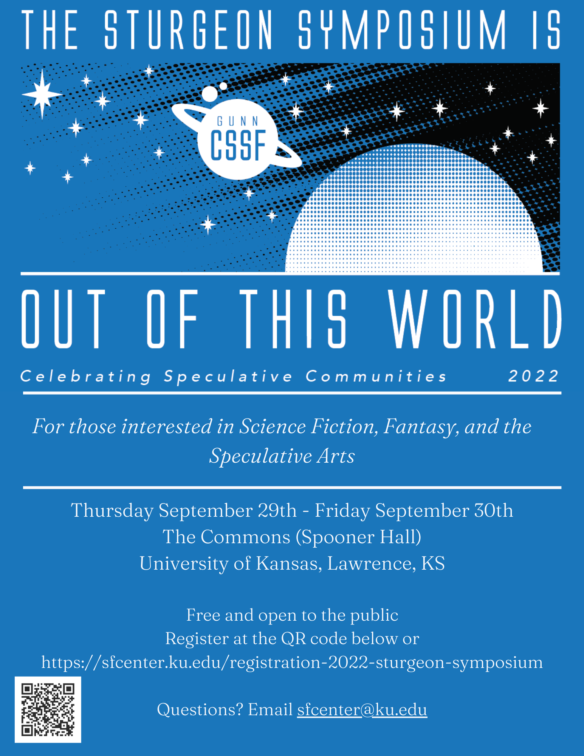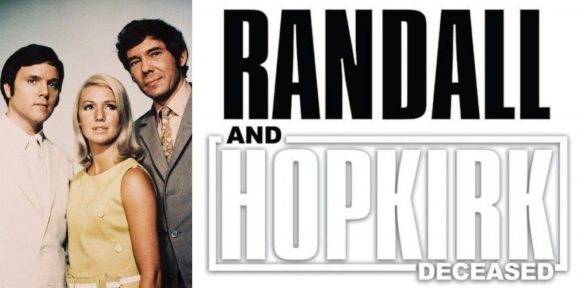(0) The Spirits have done it all in one night! (Then sent us back to work on Monday again — how is that fair?)
(1) THE DOCTOR ARRIVED RIGHT AFTER SANTA. As someone said, “We didn’t get a Christmas special, but we did get a one minute long Christmas trailer” — “The show is just beginning…” #DoctorWho returns in 2023.
And WhoCulture will be happy to tell you the meaning of every scene. They take 13 times longer than the trailer itself, but to be fair a picture is worth a thousand words only if you already know the words.
(2) THE BEST. The Galactic Stars of 1967 have been revealed in [ “Hit Parade ’67 (the year’s best science fiction)” at Galactic Journey.
Sure, there are other “must-read” lists. The Hugos. The Nebulas. But no other list is as comprehensive, so thoroughly vetted, so absolutely certain to be filled with excellent material than the Galactic Stars.
Thus, without further ado, here are the Galactic Stars for 1967! Results are in order of voting for the winners, alphabetical order by author for the honorable mentions.
Here’s the result in one prestigious category:
Best Author
Samuel R. Delany
Surprise, surprise…
Honorable Mention
Larry Niven
Fritz Leiber
The winner is the prince of the New Wave, while the runner ups include a scion of the new hard sf and a distinguished gentleman of the genre. A nice balance, I think!
(3) HEAR THE DARK. BBC Radio 4’s 12-part adaptation of Susan Cooper’s cult novel had its world premiere on December 19, 2022, and drops daily from December 21. When the dark comes rising, who will hold it back?
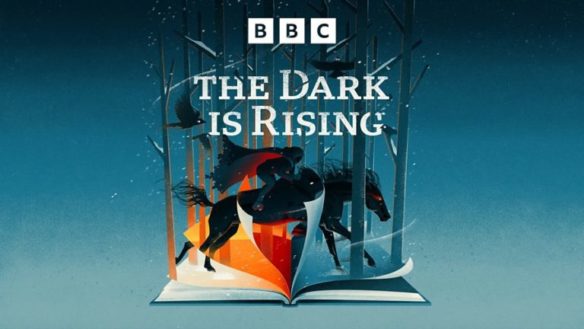
Start with the 7-minute teaser.
Fighting against evil in a time-travelling midwinter family drama. A gripping journey through a frozen landscape… and an unending epic battle against the forces of “the Dark”. On midwinter’s eve, 11-year-old Will Stanton discovers he is an ancient being and guardian of “the Light”. This eerie drama is best experienced on headphones for a unique, immersive ‘binaural’ experience.
Then listen to Episode One: “The Sign-Seeker”
A boy’s 11th birthday and an unusual gift mark the beginning of a great test of character, as young Will Stanton is drawn into an ancient struggle between Light and Dark.
He is told his task: to find the six Signs of the Light before the Dark destroys them. Realising he has supernatural powers, Will learns he is an ‘Old One’, whose duty is to fight the rising strength of the Dark across the centuries. #TheDarkIsRisingThis version, edited for BBC Radio 4, of the BBC World Service serialisation of Susan Cooper’s classic, written and recorded to take place across the Christmas holidays.
(4) HELP THE BORROWERS. Kelly McClymer advises writers “How to Bring Your Indie Book to the Attention of a Librarian” in an installment of “The Indie Files” at the SFWA Blog.
… As an indie author, you may have a way to get a librarian’s attention that is not available to the traditionally published author—letting the library acquire the book in the way that suits them best. If they would like a library hardback edition, you can do that. If they buy from a certain eBook or audiobook catalog, you can make sure your book is available there.
Key phrase: get the librarian’s attention. Librarians, like most readers, want more books that they can afford to buy, so they have to prioritize according to their patrons’ desires and interests….
(5) SNAPPED BACK. Writer-director Ryan Coogler and co-screenwriter Joe Robert Cole discuss “The ‘Black Panther’ Sequel That Never Was” with the New York Times.
…In the initial draft of the script, before Chadwick’s death, how were you looking at the story? What were the challenges?
COOGLER It was, “What are we going to do about the Blip?” [In Marvel’s “Avengers: Infinity War,” T’Challa is one of billions of people who suddenly vanish, only to be brought back by the Avengers five years later.] That was the challenge. It was absolutely nothing like what we made. It was going to be a father-son story from the perspective of a father, because the first movie had been a father-son story from the perspective of the sons.
In the script, T’Challa was a dad who’d had this forced five-year absence from his son’s life…
(6) A STOP-MOTION NUTCRACKER. This month, for Christmas, David, Tora, and Alexander Case are taking a look at the 1979 Sanrio stop-motion animated film Nutcracker Fantasy. Anime Explorations: “Nutcracker Fantasy (1979) – Breaking it all Down”.
(7) DREDDING CHANGE. [Item by SF Concatenation’s Jonathan Cowie.] The Judge Dredd Megazine has just changed its format. For some years now, this monthly comic came in a bag together with a mini-graphic novel of old strips and had a saddle stitch (staples). From this month on it will now be perfect bound with a flat spine and the min-graphic novel will be incorporated into the Megazine proper.
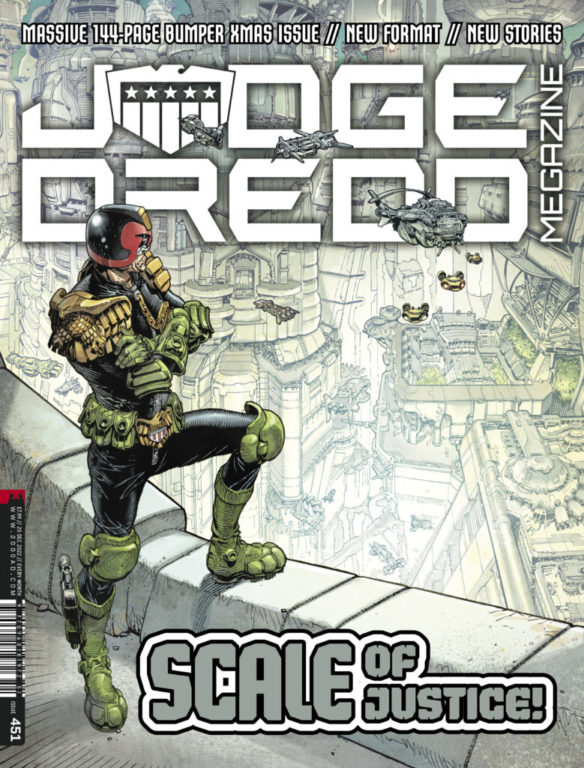
And while your attention is here, if you are not familiar with the Galaxy’s greatest comic then there is a new graphic anthology now out, The Best of 2000AD volume 1 (£14.99 / US$22.99 ISBN 978-1-786-18706-2). It is the ultimate 2000AD mix tape and an excellent introductory taster for those not yet familiar with the comic which remains the only guaranteed cure for lesser spotted thrill-sucker infections. Zarjaz. Available from all good thrill merchants on both sides of the Pond (but not Russia or China).
In this volume: Judge Dredd battles Mutie Block anarchy; Halo Jones escapes in Alan Moore’s first masterpiece; humanity is on the Brink in the space murder mystery from Dan Abnett and INJ Culbard; Judge Anderson takes centre stage in the search for Sham.
Splundig.
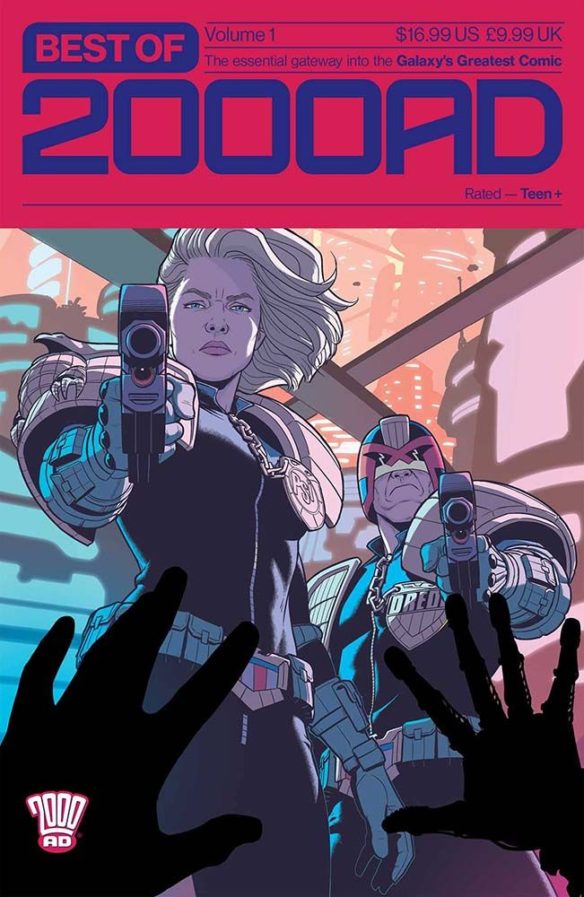
(8) STEPHEN GREIF (1944-2022). Actor Stephen Greif, whose genre resume includes Blake’s 7 and Doctor Who, died at age 78 on December 23.
… After starring in numerous stage productions throughout the 1960s and early 1970s, he made the transition to screen – landing the role of space commander Travis in Blake’s 7.
The show ran from 1978 to 1981, with Greif starring alongside Gareth Thomas, Paul Darrow, Michael Keating and Sally Knyvette….
(9) MEMORY LANE.
[By Cat Eldridge.] Dr. Seuss and Cat in the Hat sculpture at UCSD
Who doesn’t love Dr. Seuss’ Cat in the Hat? Or Dr. Seuss himself? Well if you don’t, you can leave right now as we are going to look at a very stellar sculpture of both of them that is located the University of California at San Diego. It was in 2004, the 100th anniversary of the birth of Dr. Seuss, that the Theodor Seuss Geisel Memorial statue made its debut outside the Geisel Library at UC San Diego.
Geisel lived over forty years in La Jolla and died there, in a home not far from that university. Indeed, University of California San Diego’s main library, the Geisel Library, is now home of the Dr. Seuss Collection, as he dedicated all of his papers and other memorabilia there.
The sculpture on the plaza outside the library is by Lark Grey Dimond-Cates. The Cat in the Hat stands at Dr. Seuss’ shoulder holding an umbrella.
This is not the original casting as that is to be found at the Dr. Seuss National Memorial Sculpture Garden at the Springfield Museums’ Quadrangle in Springfield, Massachusetts, the birthplace of Theodor Seuss Geisel, which we’ve discussed here previously.
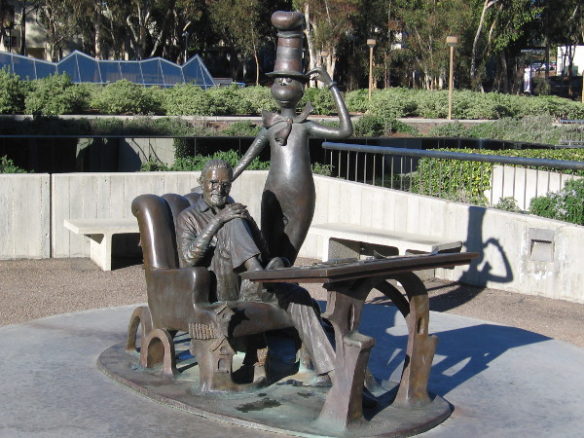
(10) TODAY’S BIRTHDAYS.
[Compiled by Cat Eldridge.]
- Born December 26, 1791 — Charles Babbage. Y’ll likely best know him as creator of the Babbage Machine which shows up in Perdido Street Station, The Peshawar Lancers, The Thrilling Adventures of Lovelace and Babbage webcomic, and there’s “Georgia on My Mind”, a novelette by Charles Sheffield which involves a search for a lost Babbage device. The latter won both a Nebula and a Hugo Award for Best Novelette. (Died 1871.)
- Born December 26, 1903 — Elisha Cook, Jr. On the Trek side, he shows up as playing lawyer Samuel T. Cogley in the “Court Martial” episode. Elsewhere he had long association with the genre starting with Voodoo Island and including House on a Haunted Hill, Rosemary’s Baby, Wild Wild West, The Night Stalker and Twilight Zone. (Died 1995.)
- Born December 26, 1911 — Milton Luros. Illustrator during the Golden Age of pulp magazines from 1942 to 1954 (yes I’m expansive on what I consider to be to the Golden Age). His work graced Science Fiction Quarterly, Astounding Stories, Future Combined with Science Fiction Stories, Future Science Fiction Stories, Dynamic Science Fiction and Science Fiction Quarterly. He had an amazing ability to illustrate women in outfits in hostile environments that simply were impractical such as one for Science Fiction Quarterly (UK), October 1952 cover had a cut out in her spacesuit so her décolletage was bare. (Died 1999.)
- Born December 26, 1951 — Priscilla Olson, 71. She and her husband have been involved with NESFA Press’s efforts to put neglected SF writers back into print and she has edited myriad works by such as Chad Oliver and Charles Harness, plus better-known ones like Jane Yolen. She’s chaired a number of Boskones.
- Born December 26, 1953 — Clayton Emery, 69. Somewhere there’s a bookstore with nothing but the novels and collections that exist within a given franchise. This author has novels in the Forgotten Realms, Magic: The Gathering and Runesworld franchise, plus several genre works including surprisingly Tales of Robin Hood on Baen Books. Must not be your granddaddy’s Hood.
- Born December 26, 1970 — Danielle Cormack, 52. If it’s fantasy and it was produced in New Zealand, she might have been in it. Performer of New Zealander status so you can guess what that means — Ephiny on Xena: Warrior Princess, a one shot as Lady Marie DeValle on Hercules: The Legendary Journeys and Ephiny on the same series, Katherine on Jack of All Trades (which I’ve mentioned before was one of Kage Baker’s fav shows) as, well, Bruce was the lead. She was Raina on Cleopatra 2525 and Shota on the Legend of the Seeker. Genre television has been very, very good for the New Zealand economy!
(11) HAIR APPARENT. And speaking again of Dr. Seuss, he’s the illustrator in Vanity Fair’s December 1931 article “Santa Claus’s beard through the ages” by Corey Ford.
The first thing that Dr. Seuss and I did, therefore, was to endeavor to trace Santa Claus’s beard back through the ages to the dawn of history. In order to accomplish this effectively, we each seized a separate strand of beard, and followed it independently to its source. The strand that Dr. Seuss chose led him a merry chase, up hill and down dale, all the way back to ancient Greek mythology, where he discovered a fabulous creature known as the Santaur (see illustration), which he claims is the origin of the whole legend of Kris Kringle. On the other hand, my own strand eventually brought me to a source known as the chin of Frank J. Swartfigure, of Council Bluffs, Iowa, who claimed he had come to New York as a boy to make his fortune, and had been standing ever since on the corner of Fifth Avenue and 47th Street, waiting for the lights to change. …
(12) A NOSE WHERE IT DOESN’T BELONG. If you think of Die Hard as Christmastime entertainment – which my nephew Bradley does – you will appreciate the nuanced humor of Eize Basa’s Twitter thread (which starts here.)
(13) GETTING WISER AS THEY GO. Tom Gauld has his own version of the wisdom of the Magi.
(14) VIDEO OF THE PREVIOUS DAY. Santa Claus appeared on Batman in 1966.
In a window cameo that makes their encounter with Col. Klink seem plausible, Batman and Robin meet Ol’ Saint Nick (played by the great character actor Andy Devine.) The Caped Crusader even directly addresses the audience
[Thanks to Andrew Porter, Michael Toman, Cat Eldridge, Peer, Alexander Case, SF Concatenation’s Jonathan Cowie, Fiona Moore, Mike Kennedy, John King Tarpinian, Chris Barkley for some of these stories. Title credit belongs to File 770 contributing editor of the day Iphinome.]


